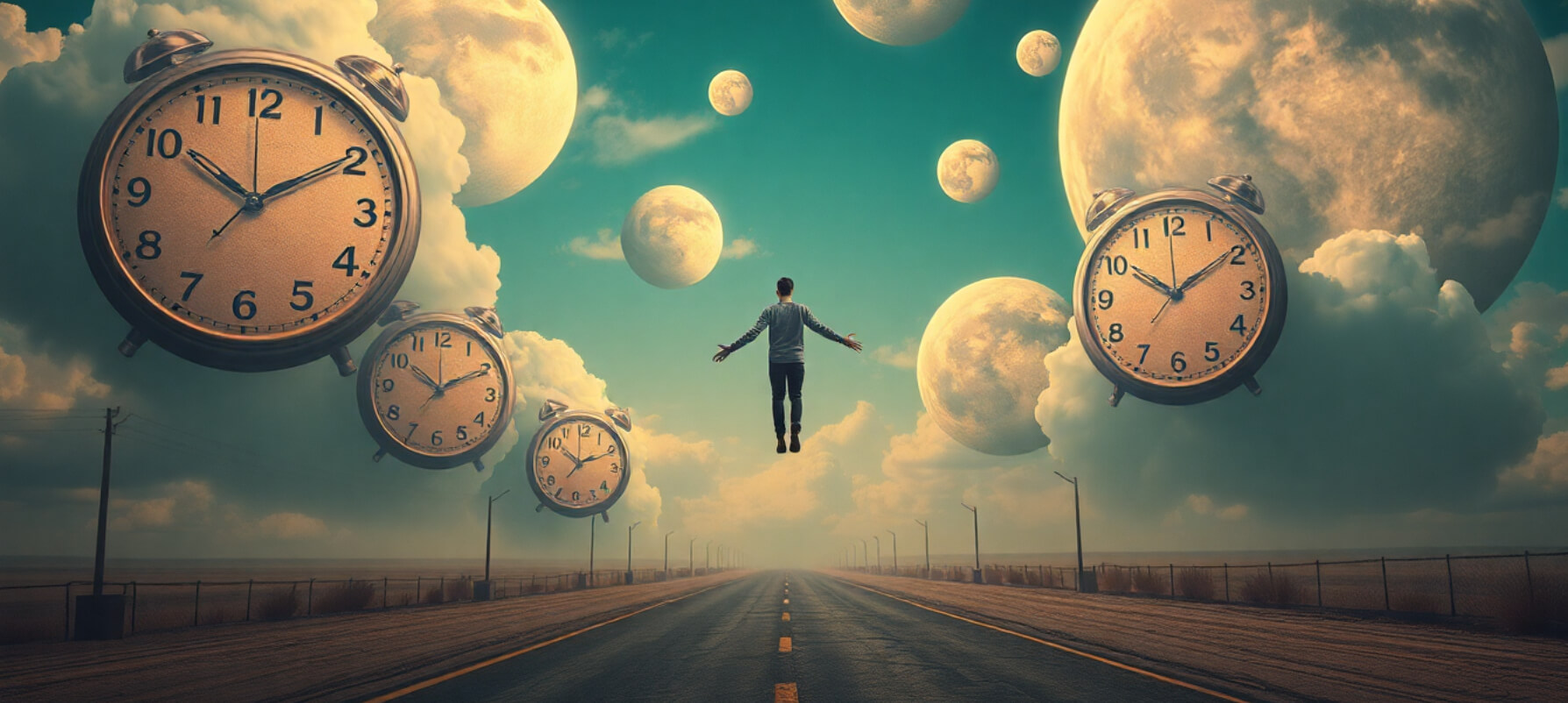May 22, 2025

Surreal photography is a genre that bends reality, blurs the line between dream and truth, and invites the viewer into a world of imagination. Inspired by the surrealist art movement, it often combines unexpected elements, dreamlike settings, and abstract concepts to provoke emotion and curiosity. Whether you're staging levitating subjects, floating objects, or disorienting landscapes, surreal photography is about creating images that make people pause—and wonder.
Surreal photography thrives on the unexpected. To create truly captivating surreal images, you need a concept that defies the normal rules of reality. Think about dreams, paradoxes, or alternate dimensions. Use your imagination to combine ordinary objects in extraordinary ways. For example, imagine a city skyline submerged in water or a person casually walking upside down in the sky.
To fuel your creativity, start by building a mood board or sketching out your ideas. These early steps help shape the narrative and emotions of your piece. Take inspiration from cinematic wedding photography techniques which blend emotion, lighting, and movement to create deeper, more impactful visuals.
Composition is the backbone of surreal photography. It’s not just about capturing a scene—it’s about arranging elements in a way that creates tension, mystery, or harmony. Use tools like symmetry, leading lines, or unconventional framing to evoke emotion. Consider placing your subject at unexpected angles or within abstract, dreamlike settings. You can even take cues from minimalist photography techniques to eliminate distractions and sharpen focus on your surreal concept. By deliberately planning your composition, you control how the viewer's eye travels through the scene, ensuring the surreal elements remain engaging and powerful.
Editing is where surreal photography truly comes to life. In post-production, you can layer multiple exposures, manipulate the scale of objects, or alter the natural laws of physics. Tools like Adobe Photoshop or Lightroom allow you to seamlessly blend your surreal elements, creating an atmosphere that feels both strange and mesmerizing.
Understanding color correction vs. color grading is key here—color correction ensures that each element is properly balanced, while color grading allows you to apply a unique mood to your image. A muted, desaturated look might suit a surreal dreamscape, while a bold, saturated palette might be used to create a more fantastical vibe. Experiment with the balance of tones and mood to create the ideal environment for your concept.
Double exposure photography is a classic technique that naturally lends itself to surrealism. By overlaying multiple images into one frame, you can create layered visuals that convey multiple moments, perspectives, or emotions. Whether you're combining a portrait with a landscape or blending abstract shapes into a human figure, double exposure can help you express the complexity of surreal ideas.
Use this technique to create dreamlike visuals, or evoke haunting, poetic emotions in your compositions. The key is to ensure that both images interact seamlessly, creating an illusion of unity while still leaving room for interpretation.

Lighting is a powerful tool in surreal photography. In the absence of normal reality, light becomes your storytelling partner. Consider experimenting with unconventional light sources—use harsh, directional studio lighting or manipulate shadows to create exaggerated effects. Learn how to control artificial and natural light with guides like using natural light for stunning photos and artificial lighting tips.
Strong contrasts between light and dark can dramatically alter the mood of an image. This can evoke a sense of mystery or otherworldliness, as if the scene exists in an alternate dimension.
One of the keys to surreal photography is breaking free from the mundane. Sometimes, that means removing elements from your scene that feel too ordinary or predictable. Object removal tools allow you to erase backgrounds or distractions that disrupt the illusion you’re trying to create. The more you refine your editing, the more immersive and convincing your surreal scenes will become.
Props and locations play a huge role in creating surreal imagery. Often, surrealism is about juxtaposing the unexpected—placing ordinary objects in extraordinary environments. For example, imagine floating objects in a vast open field, or reimagine a kitchen scene with flying utensils. Think outside the box—try shooting in locations that offer a sense of emptiness or disorientation, such as empty streets or vast, open fields, and incorporate unexpected props to distort reality.
Additionally, using lightweight gear like portable tripods can help you stabilize complex shots in unpredictable environments, ensuring your surreal vision is executed with precision.
Surreal photography offers a unique opportunity to turn your creative art into a source of income. With a portfolio full of imaginative work, you can sell your images online or create prints for art enthusiasts. Listing your surreal work on top photo-selling platforms can help you reach a wider audience who appreciate abstract and conceptual photography.
If you’re offering surreal photoshoots for clients or galleries, pricing your work appropriately is essential. Use guides like pricing your photography services to set fair rates. Additionally, explore passive income strategies through licensing, print sales, or commissioned work.
By embracing these tips and using the right techniques, your surreal photography can become not just an artistic pursuit but also a profitable venture.
Surreal photography is a fusion of vision, creativity, and technique. It encourages photographers to think beyond the ordinary and express emotions through the impossible. With thoughtful planning, clever editing, and the right mindset, you can transform your ideas into visually arresting art that leaves a lasting impression.
Stay up to date with the newest tips, gear reviews, and step-by-step guides to elevate your photography journey from home and beyond.